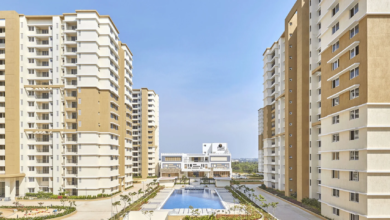
In the ever-evolving landscape of retail, one thing remains constant: consumer behavior drives the market. From shifts in shopping preferences to the rise of experiential retail, understanding and adapting to changing consumer behavior is paramount for both landlords and tenants in the retail space leasing market. In this comprehensive guide, we’ll explore the impact of changing consumer behavior on retail space leasing, with a focus on the dynamic market of Hyderabad, India, where land for lease and retail space for lease are in high demand.
The Evolution of Consumer Behavior
Consumer behavior is not static; it evolves over time in response to various factors such as technological advancements, economic changes, and cultural shifts. In recent years, we’ve witnessed a significant transformation in how consumers shop. The rise of e-commerce, the demand for personalized experiences, and the shift towards sustainability have all played a role in shaping the way consumers interact with retail spaces.
The Rise of Experiential Retail
One of the most notable shifts in consumer behavior is the increasing demand for experiential retail. Today’s consumers seek more than just products; they crave immersive experiences that engage their senses and emotions. As a result, retail spaces are no longer just places to buy goods but destinations where consumers can explore, interact, and connect.
In Hyderabad, a city known for its vibrant culture and thriving economy, the demand for experiential retail spaces is on the rise. Land for lease in Hyderabad is highly sought after by developers and landlords looking to create innovative retail environments that cater to the desires of modern consumers.
Understanding the Impact on Retail Space Leasing
Changing consumer behavior has profound implications for retail space leasing. Landlords and tenants alike must adapt to meet the evolving needs and preferences of consumers to remain competitive in the market.
Here are some key ways in which changing consumer behavior affects retail space leasing
Flexible Lease Terms
With the uncertainty surrounding consumer preferences, tenants are seeking more flexibility in lease terms. Shorter lease agreements allow retailers to quickly adapt to changing market conditions and pivot their strategies accordingly.
Demand for Prime Locations
As consumers prioritize convenience and accessibility, retail spaces in prime locations become increasingly valuable. Land for lease in Hyderabad’s bustling commercial districts is in high demand as retailers compete for coveted spots that offer high foot traffic and visibility.
Emphasis on Omnichannel Integration
The rise of e-commerce has blurred the lines between online and offline retail. Retailers are now seeking spaces that seamlessly integrate both channels, offering consumers a seamless shopping experience across multiple touchpoints.
Customization and Personalization
Consumers crave personalized experiences that resonate with their individual preferences and values. Retail spaces that offer customization options, interactive features, and personalized services are more likely to attract and retain customers.
Strategies for Success
In light of these trends, landlords and tenants must adopt proactive strategies to thrive in the competitive retail space leasing market. Here are some actionable steps that stakeholders can take to capitalize on changing consumer behavior:
Conduct Market Research
Stay informed about the latest consumer trends and preferences through market research and data analysis. Understanding your target audience is essential for tailoring your retail space to meet their needs effectively.
Embrace Innovation
Be open to innovative ideas and technologies that enhance the shopping experience and differentiate your retail space from competitors. Whether it’s implementing augmented reality displays or offering virtual shopping assistants, embracing innovation can set your retail space apart.
Foster Community Engagement
Create a sense of community within your retail space by hosting events, workshops, and pop-up shops that bring people together. Building strong connections with your customers fosters loyalty and encourages repeat visits.
Prioritize Sustainability
With growing awareness of environmental issues, consumers are increasingly drawn to sustainable brands and eco-friendly practices. Incorporating sustainable design elements and promoting eco-conscious initiatives can attract environmentally conscious consumers to your retail space.
Conclusion
As consumer behavior continues to evolve, so too must the retail space leasing market. By understanding the impact of changing consumer preferences and adapting accordingly, landlords and tenants can position themselves for success in an increasingly competitive landscape. In Hyderabad, where land for lease and retail space for lease are in high demand, staying ahead of the curve is essential for thriving in the dynamic retail market. By embracing experiential retail concepts, prioritizing flexibility and innovation, and fostering community engagement, stakeholders can create retail spaces that resonate with today’s discerning consumers.
Must Read:- How Real Estate CRM Software Transforms Your Business



